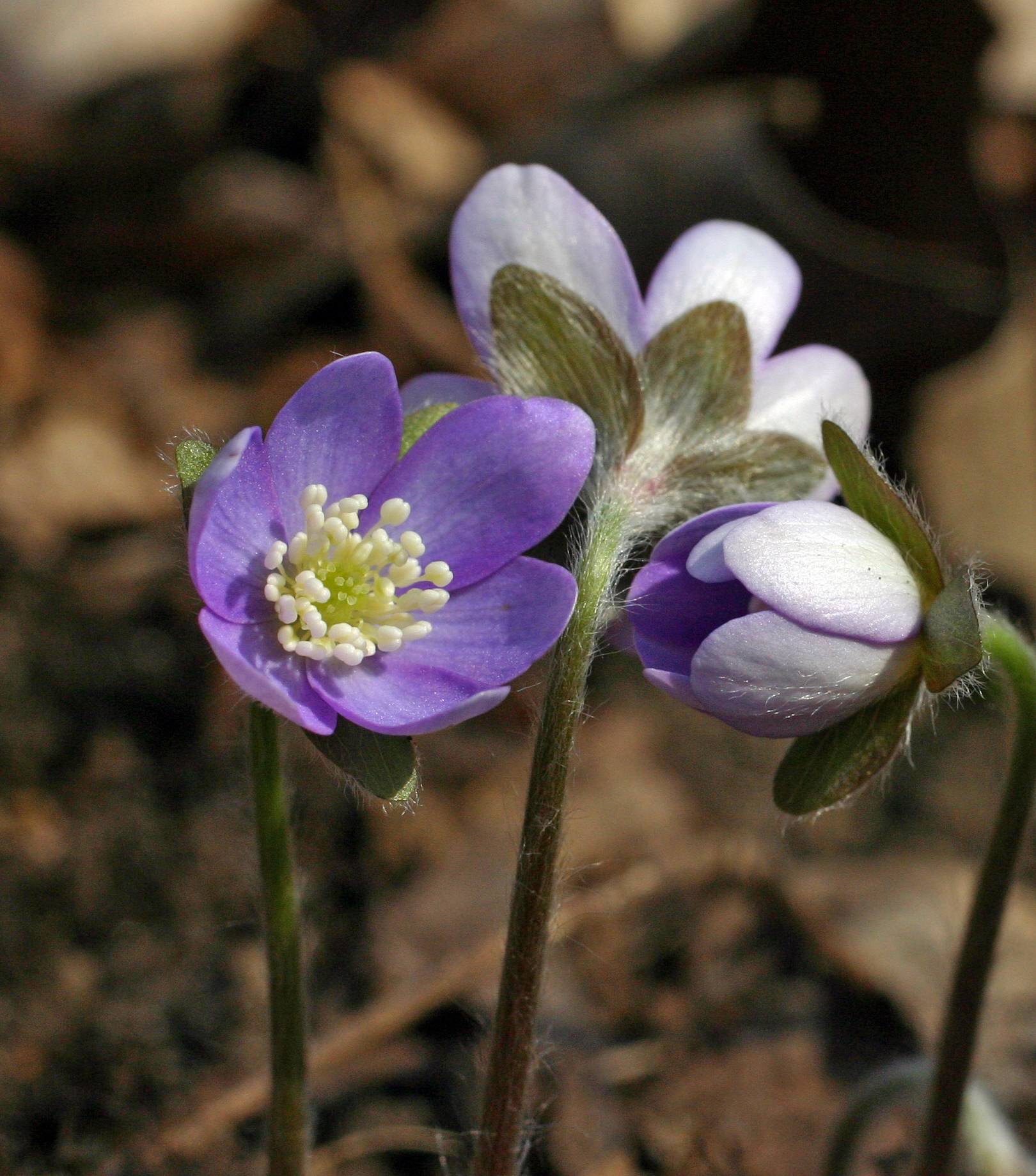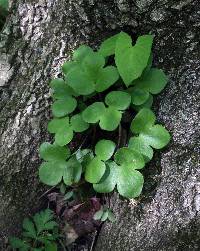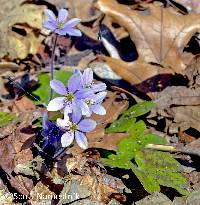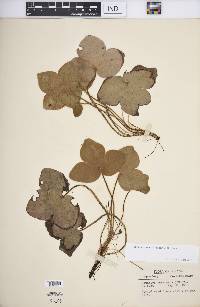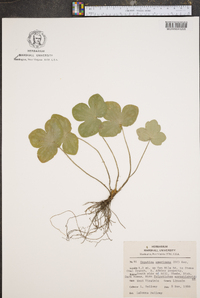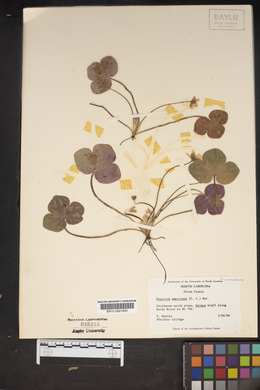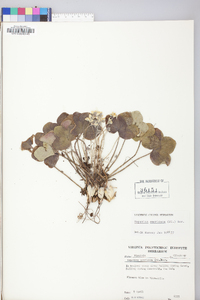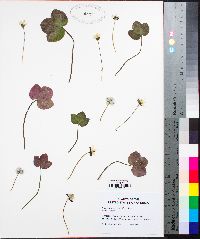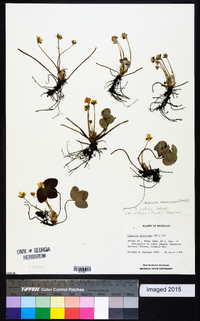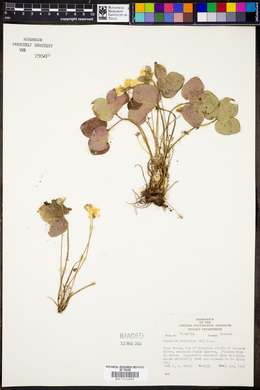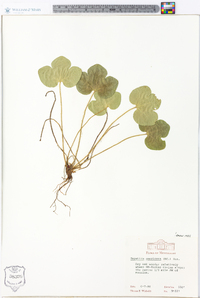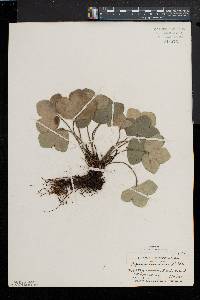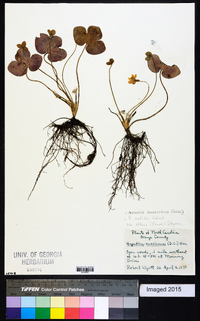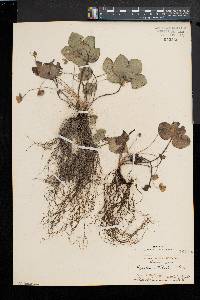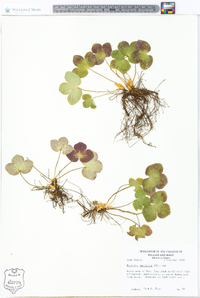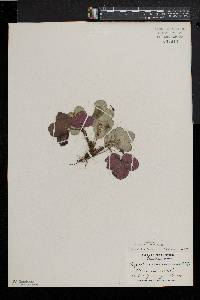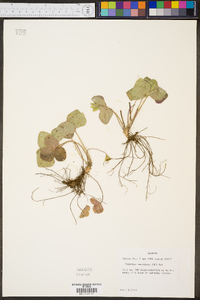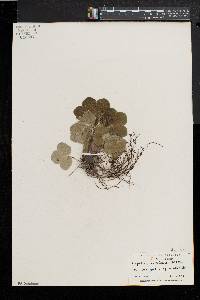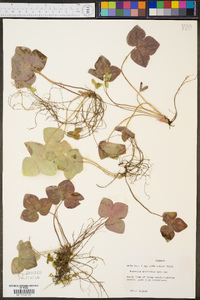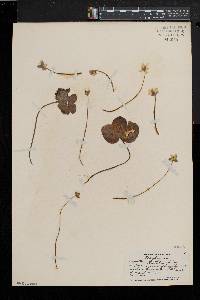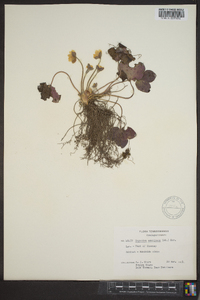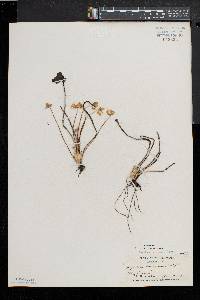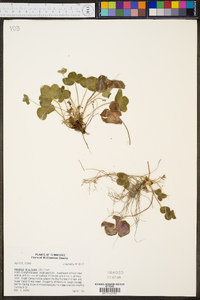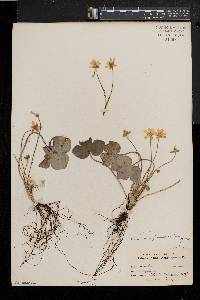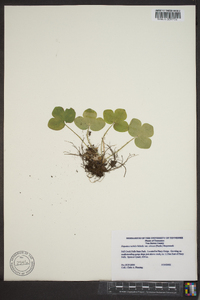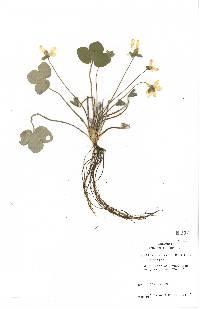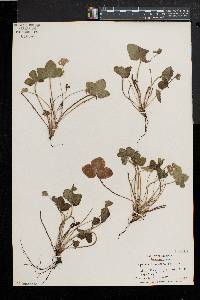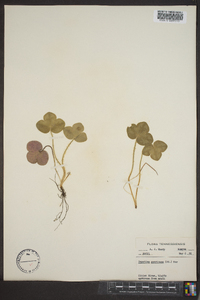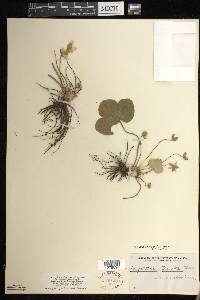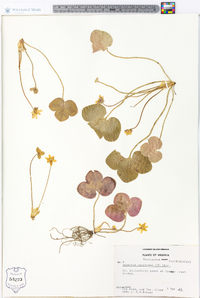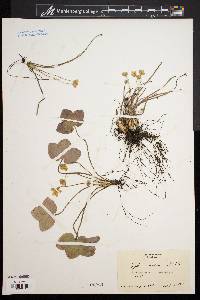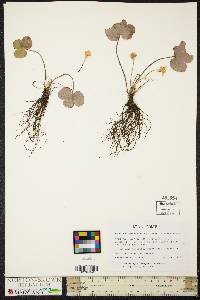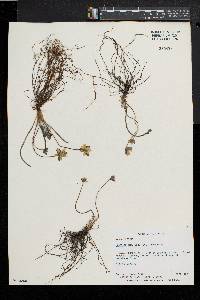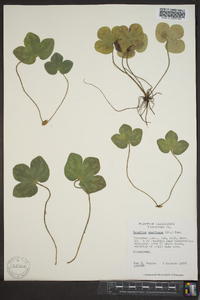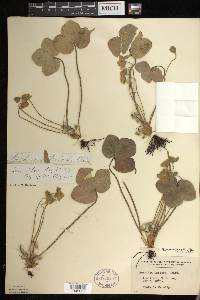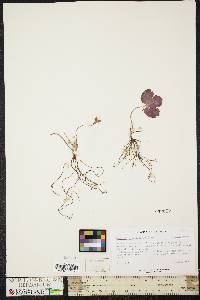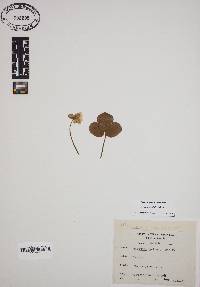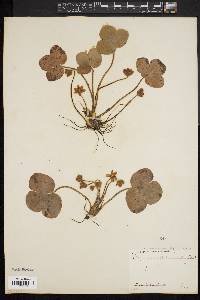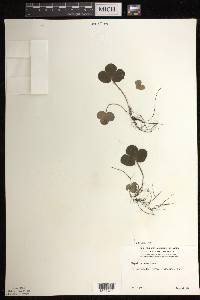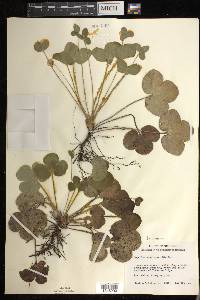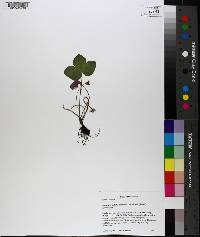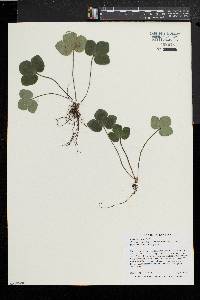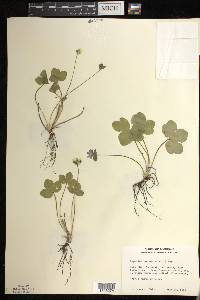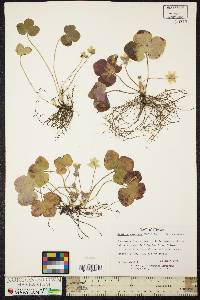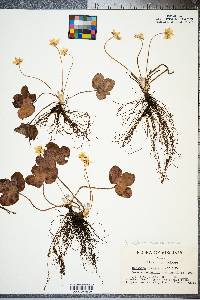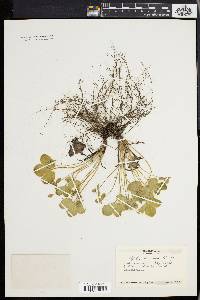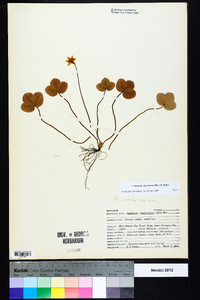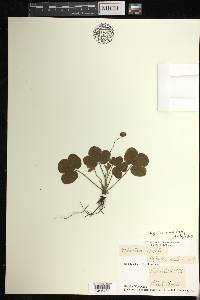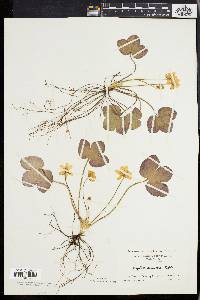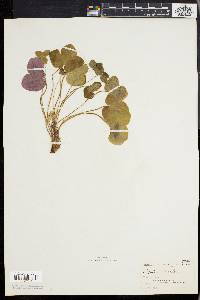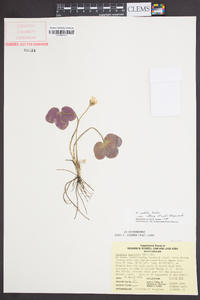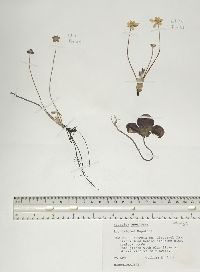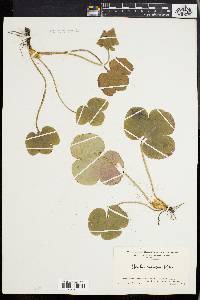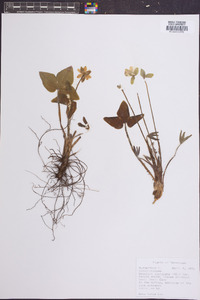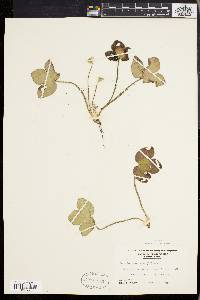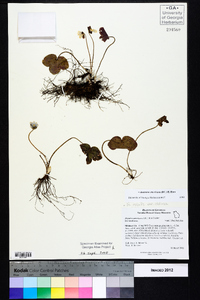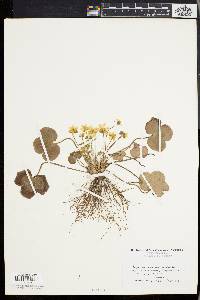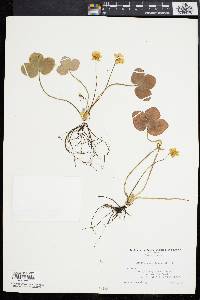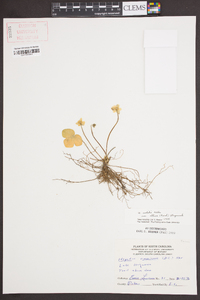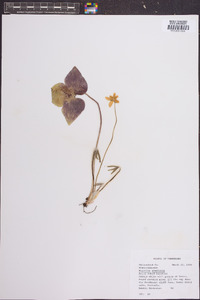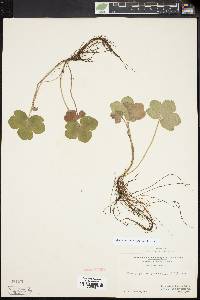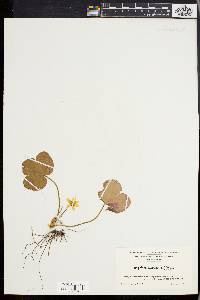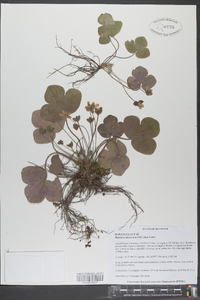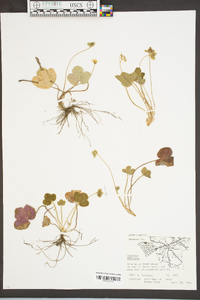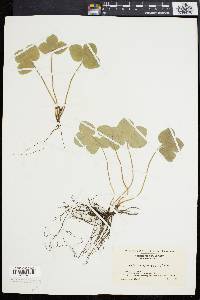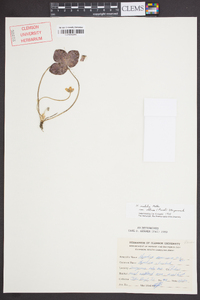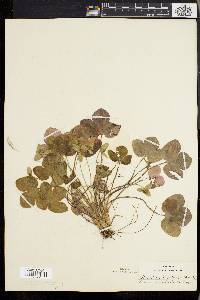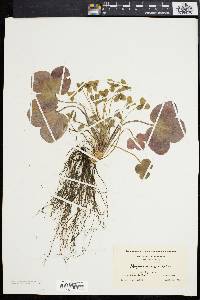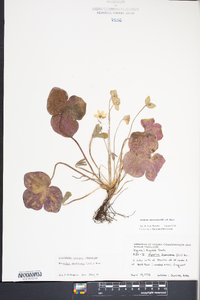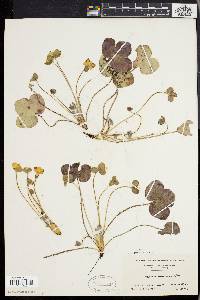
|
|
|
|
Family: Ranunculaceae
Round-Lobe Hepatica
[Hepatica americana (DC.) Ker Gawl., moreHepatica americana f. candida Fernald, Hepatica nobilis var. obtusa (Pursh) Steyerm., Hepatica triloba var. americana DC.] |
Aerial shoots 5-18 cm, from rhizomes, rhizomes ascending to horizontal. Basal leaves 3-15, often purplish abaxially, simple, deeply divided; petiole 5-20 cm; leaf blade widely orbiculate, 1.5-7 × 2-10 cm, base cordate, margins entire, apex rounded, surfaces strongly villous to glabrescent; lobes 3(-4), widely ovate, 1-4 cm wide; middle lobe 50-70(-75)% of total blade length. Inflorescences 1-flowered, villous to pilose; involucral bracts 3, 1-tiered, simple, dissimilar to basal leaves, sessile, calyx-like, closely subtending flower, ovate or elliptic, 0.65-1.8 × 0.5-1.2 cm, bases distinct, cuneate, margins entire, apex obtuse, strongly villous to glabrescent. Flowers: sepals 5-12, white to pink or bluish, ovate to obovate 7.5-14.5 × 3.5-7.7 mm, glabrous; petals absent; stamens 10-30. Heads of achenes spheric; pedicel 0.1-0.4 cm. Achenes: body narrowly ovoid, 3.5-5 × 1.2-1.6 mm, slightly winged, hispid, gradually tapering; beak indistinct. 2 n =14. Flowering spring. Mixed woods, often in association with both conifers and deciduous trees; 0-1200 m; Man., N.B., N.S., Ont., Que.; Ala., Ark., Conn., Del., D.C., Fla., Ga., Ill., Ind., Iowa, Ky., Maine, Md., Mass., Mich., Minn., Miss., Mo., N.H., N.J., N.Y., N.C., Ohio, Pa., R.I., S.C., Tenn., Vt., Va., W.Va., Wis. Anemone americana is found in habitats similar to those of A . acutiloba but usually in drier sites with more acid soils.
Lvs densely long-pilose when young, especially beneath, but glabrate in age, persistent and green until the following spring, 3-lobed, the lobes broadly obtuse or rounded, the terminal one often wider than long; length of the lf blade about 2 (to 2.5) times the distance from the summit of the petiole to the sinuses; scapes 5-15 cm, villous, as also the petioles; bracts obtuse, nearly as long as the sep; fls bluish to white or pink, 12-25 mm wide, without nectar; 2n=14. Dry or moist but upland woods; Que. and N.S. to Minn. and Man., s. to Ga., Tenn., and Mo. Mar., Apr. (H. triloba and H. hepatica, misapplied; H. nobilis var. obtusa) Gleason, Henry A. & Cronquist, Arthur J. 1991. Manual of vascular plants of northeastern United States and adjacent Canada. lxxv + 910 pp. ©The New York Botanical Garden. All rights reserved. Used by permission. From Flora of Indiana (1940) by Charles C. Deam Infrequent to locally frequent in the lake area, becoming local and very rare in the southern part, or possibly absent. It has been reported from several of the southern counties but there are no specimens. It is possible that the identifications are wrong since this species prefers a rather acid soil, but the habitat does occur locally in southern Indiana, and I see no reason why it should not be found. My efforts to find it have failed. The flowers vary in color from white to pink and purple. These forms have been assigned names but Weatherby (Rhodora 27: 131-132. 1925) found that white forms are constant but that color forms may be one color one year and another color the next year. Hence I am omitting these color form names. ...... Indiana Coefficient of Conservatism: C = 8 Wetland Indicator Status: N/A Diagnostic Traits: Plants <20 cm; leaves all basal, 3-lobed, subrotund, angles broadly rounded; flowers solitary, blue, white, or purple, subtended by 3 bracts; perianth of ca. 5-6 sepals. |
This project was made possible in part by the Institute of Museum and Library Services [MG-70-19-0057-19].
Powered by Symbiota

